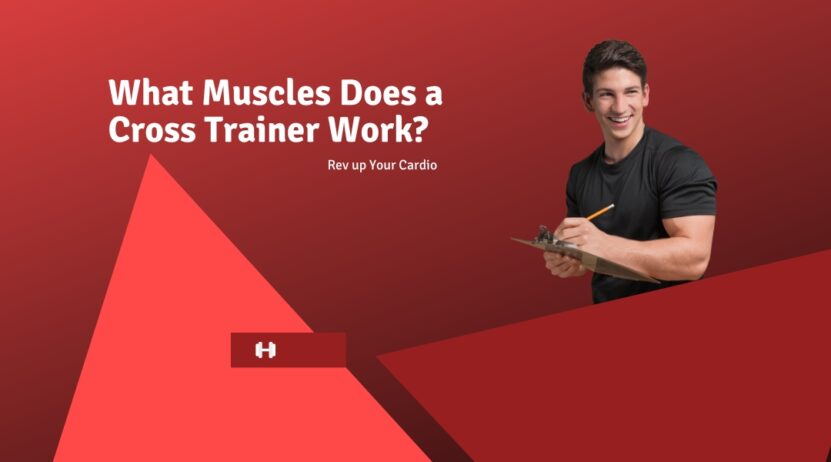The world of fitness is brimming with endless workout options, each targeting specific muscle groups and catering to a wide range of preferences. But what if you could engage your entire body in a single workout?
Enter the cross trainer, an innovative exercise machine designed to work for multiple muscle groups simultaneously, offering a full-body workout experience that promotes balanced muscle development and overall fitness. In this comprehensive guide, we’ll delve into the muscles targeted by the cross-trainer, its benefits, and how to make the most of your cross-training workouts.
Overview of This Exercise Machine
A cross trainer, also known as an elliptical machine, is a stationary exercise device that simulates various activities such as walking, running, and stair climbing. It features a unique combination of pedals and arm handles that move in harmony, allowing users to engage their upper and lower bodies simultaneously. Cross trainers have become increasingly popular in gyms and homes worldwide due to their low-impact nature, versatility, and effectiveness in working for multiple muscle groups at once.
Muscles Worked by the Cross Trainer

By combining both lower and upper body movements, the cross trainer targets an extensive range of muscle groups, making it an ideal choice for full-body workouts. The primary muscles engaged by the cross-trainer include:
Upper Body:
- Deltoids: Located at the front, side, and back of your shoulders, the deltoids stabilize your arms and help you push and pull the handles of the cross trainer.
- Biceps: The bicep muscles are located on the front of your upper arm and are activated when you pull the handles toward you.
- Triceps: Situated at the back of your upper arm, the triceps work in tandem with the biceps, assisting in pushing the handles away from your body.
- Pectorals: These chest muscles are engaged when you push and pull the handles, providing additional support and stability to your upper body.
- Rhomboids and Latissimus Dorsi: Found in your upper back, these muscles work together to pull the handles toward you, strengthening your back and improving posture.
Core:
- Rectus Abdominis: This primary abdominal muscle, commonly known as the “six-pack,” helps stabilize your torso and maintain balance during cross-trainer workouts.
- Obliques: The internal and external oblique muscles, located on the sides of your abdomen, assist in stabilizing your core and twisting your torso during cross-training sessions.
Lower Body:
- Gluteus Maximus: The largest muscle in your body, the gluteus maximus, is responsible for hip extension and plays a significant role in powering the elliptical pedals.
- Quadriceps: Located at the front of your thighs, the quadriceps work to straighten your legs and push the pedals downward.
- Hamstrings: Found at the back of your thighs, the hamstrings work alongside the quadriceps to bend your knees and help pull the pedals upward.
- Calves: The gastrocnemius and soleus muscles in your calves help to flex your ankles, driving the pedals through their elliptical motion.
Benefits of Cross Trainer Workouts
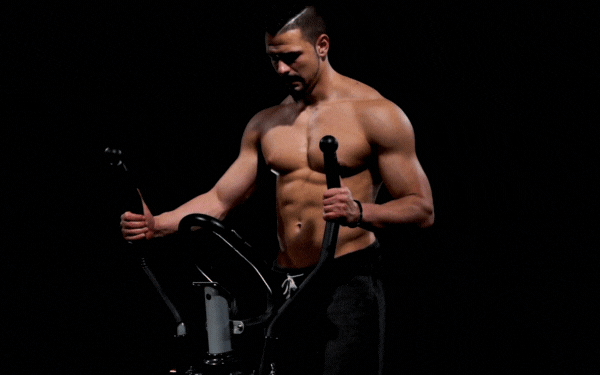
Cross trainers offer numerous advantages, making them an ideal choice for fitness enthusiasts of all levels. Some of the key benefits include:
- Low-Impact Exercise: The cross trainer’s smooth, elliptical motion significantly reduces the impact on joints compared to activities like running, making it an ideal option for those with joint issues or recovering from injuries.
- Full-Body Workout: As mentioned earlier, the cross trainer engages multiple muscle groups, providing a comprehensive and balanced workout that promotes overall fitness.
- Cardiovascular Fitness: Cross-trainer workouts help improve cardiovascular endurance, strengthening the heart and lungs while increasing overall stamina.
- Weight Loss: The full-body engagement during cross-training sessions leads to increased calorie burn, which can contribute to weight loss when combined with a healthy diet.
- Versatility: Cross trainers typically offer adjustable resistance levels and incline settings, allowing users to customize their workouts and target specific muscles or fitness goals.
- Improved Posture and Balance: The cross trainer’s focus on core and upper body muscles helps improve posture and balance, which can contribute to better overall functional fitness.
Tips for Maximizing Your Cross Trainer Workout
To make the most of your cross-training workouts and reap the full benefits, consider implementing the following tips:
- Warm-Up: Begin with a 5-10 minute warm-up to prepare your muscles and joints for the workout. This can be a combination of dynamic stretches and light cardio exercises.
- Proper Form: Maintain proper posture by keeping your shoulders back, chest open, and core engaged throughout the workout. This will help prevent injury and ensure you’re effectively targeting the desired muscles.
- Use the Handles: Engage your upper body muscles by actively pushing and pulling the handles, rather than simply holding onto them for support.
- Customize Your Workout: Experiment with different resistance levels and incline settings to challenge your muscles and keep your workouts varied and interesting.
- Interval Training: Incorporate high-intensity interval training (HIIT) into your cross-training routine to boost calorie burn and cardiovascular fitness. This can be achieved by alternating periods of high and low intensity during your workout.
- Cool Down: Finish your workout with a 5-10 minute cool-down period, consisting of gentle stretches and deep breathing exercises to help your body recover and prevent muscle soreness.
The Best Cross Trainer Exercises You Can Try
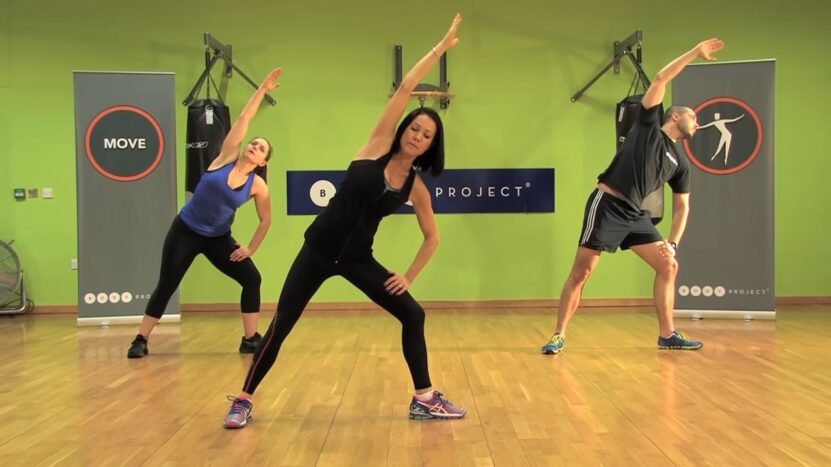
The cross-trainer provides a plethora of exercise options to keep your workouts engaging and challenging. Here are some of the best ones to incorporate into your fitness routine:
Steady-State Cardio
Maintain a consistent pace and resistance level for an extended period (20-60 minutes) to build cardiovascular endurance and burn calories. This is an excellent exercise for beginners and those looking to build a solid fitness foundation.
Interval Training
Incorporate high-intensity intervals into your cross-training workout by alternating between high and low resistance levels or speeds. This approach helps boost calorie burn, improve cardiovascular fitness, and build endurance. For example, try 30 seconds of high intensity followed by 1 minute of low intensity, repeating this cycle for 20-30 minutes.
Hill Climbing
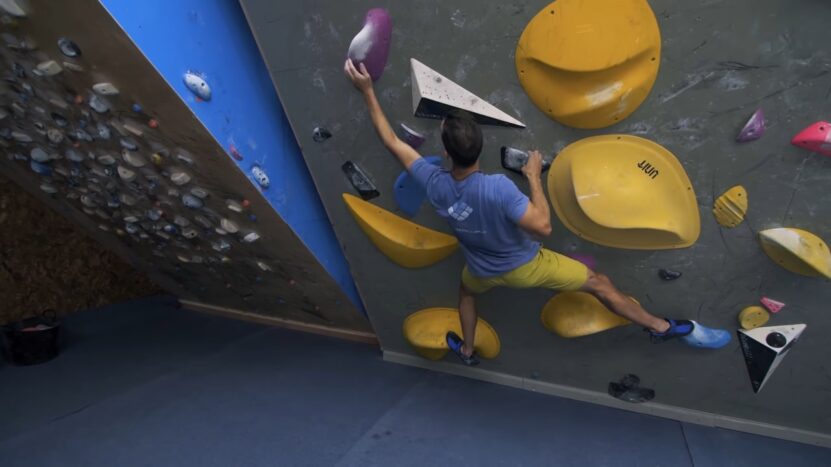
Increase the incline setting on your cross trainer to simulate hill climbing, which targets your glutes, hamstrings, and calves more intensely. This exercise is an excellent option for strengthening your lower body and adding variety to your workout routine.
Upper Body Focus
Intentionally emphasize pushing and pulling the handles to engage your upper body muscles more effectively. You can also increase the resistance on the handles to challenge your arms, chest, and back muscles further. This exercise helps to balance out the typically lower-body-dominant nature of cross-training workouts.
Reverse Motion
Switch up your workout by pedaling backward on the cross trainer. This reverse motion places greater emphasis on your hamstrings and glutes, providing a well-rounded lower-body workout.
Core Stability Challenge
Add a core stability challenge to your cross-training sessions by periodically releasing the handles and maintaining balance using only your core muscles. This exercise helps to engage and strengthen your core, which contributes to improved posture and balance.
Final Words
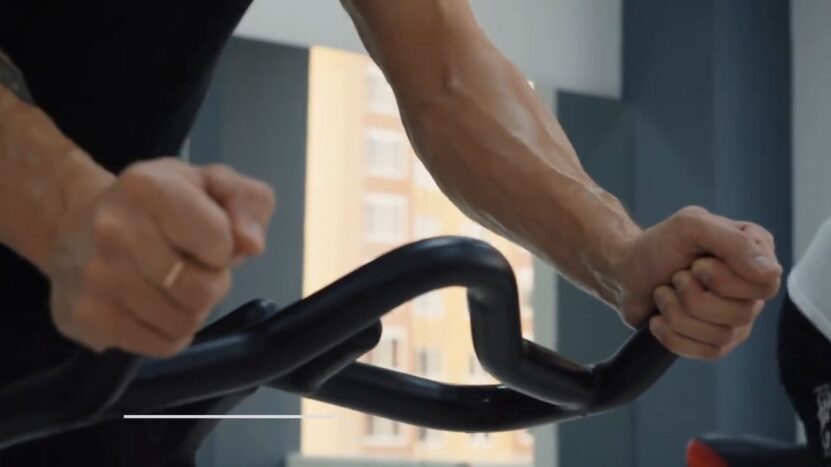
The cross trainer is a versatile and effective exercise machine that offers a comprehensive full-body workout. By engaging a wide range of muscle groups in both the upper and lower body, as well as the core, cross-training sessions can help you achieve a balanced and toned physique.
With its low-impact nature and numerous benefits, the cross-trainer is a valuable addition to any fitness routine, catering to individuals of all fitness levels and goals. By following the tips provided in this guide, you can maximize your cross-training workouts and unlock the full potential of this versatile fitness tool.

